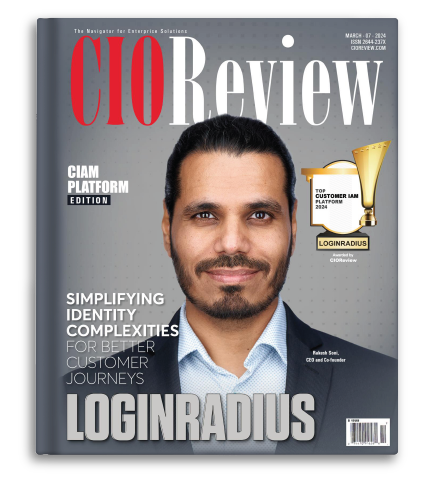Introduction
Data breaches can have devastating consequences for both a user and the website. Several platforms turned to magic link or OTP (besides using a password) to counter these events and protect users’ online accounts.
Presently, many companies are using two-factor authentication (2FA) to ensure no unauthorized party has access. For example, recently, Google announced that they are planning to make two-factor authentication default for users, so more businesses are obligated to implement it.
However, despite this widespread popularity, experts question how secure 2FA is. But first, let’s understand what two-factor authentication is.
What is Two-Factor Authentication
Two-factor authentication (2FA) is a security measure that requires consumers two factors to verify their digital identity. Meaning, it does not grant access if the user cannot produce the right username and password, both unique to the individual.
In addition to both these requirements, the multi-factor authentication process asks for an additional piece of information like Google Authenticator, Magic Link, or OTP to log in to an account.
An example of this authentication is the login process using Instagram. The first part of the process involves plugging in personal information like a password and username. After this comes the security code that is sent to the person through email or an SMS.
Several websites also use authenticator apps to generate unique codes. In fact, this method is one of the highest levels of security one will receive. This proves Google authenticator is safe.
Benefits of 2FA Implementation
Implementing Two-Factor Authentication (2FA) offers several advantages for both users and businesses:
Enhanced Security
2FA provides an additional layer of security beyond traditional username and password combinations. This extra step ensures that even if login credentials are compromised, unauthorized access is prevented without the second factor.
Protection Against Data Breaches:
Data breaches can have severe consequences. 2FA helps mitigate these risks by requiring an additional piece of information, such as a security code, which is not easily obtainable even if login credentials are stolen.
Reduced Risk of Account Takeover
With 2FA in place, the likelihood of unauthorized individuals gaining access to user accounts is significantly reduced. This is particularly crucial for sensitive accounts such as financial or email accounts.
Compliance with Industry Standards
Many industries and regulatory bodies require the implementation of 2FA as part of security standards. Adhering to these standards not only protects users but also ensures legal compliance for businesses.
Improved User Trust
By offering 2FA, businesses demonstrate their commitment to protecting user data. This builds trust with consumers who value security and privacy in their online interactions.
How Does 2FA Work?
The working process of 2FA differs depending on what kind of information is requested from the user. The login process can involve a combination of two variations given below:
- Data is already known to the individual, like login credentials. There are even apps to keep track of this information. For example, the Google Password Manager.
- Data about one’s physical aspect like biometric data.
- Data obtained from a possession like mobile phones will generate a confirmation code.
Businesses use two of these three requirements in conjunction with login details and phone numbers to protect a user.
Types of Two-Factor Authentication
1. SMS Authentication
One of the most common forms of 2FA, SMS authentication involves sending a one-time code to the user's mobile device. The user enters this code along with their username and password to complete the login process.
2. Email Verification
Users receive a verification link or code via email, which they must click or enter to confirm their identity. This method is convenient for those who prefer email-based verification.
3. Authenticator Apps
Apps like Google Authenticator, Authy, or Microsoft Authenticator generate time-based one-time passwords (TOTPs) that users enter during login. These apps are widely used and offer an additional layer of security.
4. Biometric Authentication
This includes fingerprint scans, facial recognition, or iris scans. Users provide a physical characteristic for verification, adding a unique and difficult-to-replicate factor to the authentication process.
5. Hardware Tokens
Physical devices like USB keys or smart cards generate authentication codes. These tokens are considered highly secure as they are not vulnerable to phishing or hacking attacks.
6. Push Notifications
Users receive a push notification on their registered device asking for authentication. They can approve or deny the login attempt directly from the notification, making it a convenient and secure method.
7. Backup Codes
In case a user loses access to their primary 2FA method (like a phone), they can use backup codes. These codes are pre-generated and provided to the user during setup. They serve as a fallback for accessing their account without the primary 2FA method.
Four Myths about 2FA - Busted!
The implementation of 2FA by various companies as the only security measure has been a source of concern. These experts claim that the concept of 2FA is misunderstood. Here are some common misconceptions about how secure is 2FA:
1. It is not susceptible to common cyber threats.
2FA can be vulnerable to several attacks from hackers because a user can accidentally approve access to a request issued by a hacker without acknowledging it. This is because the user may not receive push notifications by the app notifying them of what is being approved. The codes are sent through unreliable third-party mediums. The safety of sending a code through an SMS message can depend on the mobile provider.
2. The implementation of 2FA can be considered as a quick fix for a security breach.
A security breach can have lasting consequences on the reputation of a platform. This is because there are two negative outcomes. The first is one has to obtain a token or a cryptic password sent through text message. The sudden requirement of 2FA may lead to the user being unable to log in. If it is an optional logging method, most users will overlook how secure is 2FA and refrain from using it.
3. Almost every 2FA solution is similar, with minor differences.
There has been a vast difference in how secure is 2FA since the development of the concept. The authentication can take place by issuing an SMS, a verification link in one’s email account, and through other means. There are even cases where the 2FA process takes place automatically through keying information stored on the browser.
4. Most companies do not care about how secure is 2FA but see it as a legal requirement.
Smaller companies mostly do not spend a significant amount of revenue on security. They create a makeshift security policy and a loose usage of 2FA without understanding its security. Some companies view it as a hindrance to consumer experience since it requires a longer than usual login process.
When Faced With the Question, Is 2-Step Verification Safe?
The answer is a sure yes. However, it is not foolproof.
There should be additional measures to further prevent hackers from infiltrating the user’s accounts. Google offers a set of backup codes that should be kept in a safe place. These backup codes are used to log into Gmail accounts. Facebook and Apple also offer effective backup processes.
The LoginRadius Identity Platform provides two-factor Authentication as additional security for consumers. Once they enter their login credentials, an authentication code is sent to them for verification.
This concept of using several factors can drastically reduce the vulnerabilities of web applications and mobiles. After all, protecting consumer privacy is what matters the most.
Frequently Asked Questions (FAQs)
1. What are some examples of two-factor authentication (2FA)?
Examples include SMS codes, email verification links, authenticator apps like Google Authenticator, biometric scans, hardware tokens, push notifications, and backup codes.
2. How do I get a two-factor authentication (2FA) code?
Get codes through SMS messages, email links, authenticator apps generating codes, biometric scans, hardware tokens, or push notifications on registered devices.
3. What is the most common two-factor authentication (2FA)?
The most common 2FA methods include SMS codes and authenticator apps like Google Authenticator due to their ease of use and widespread adoption.
4. Which authentication is better, SMS or the Authenticator app?
Authenticator apps like Google Authenticator are generally considered more secure than SMS codes, as SMS can be vulnerable to SIM swapping attacks. However, both methods offer an additional layer of security compared to passwords alone.









